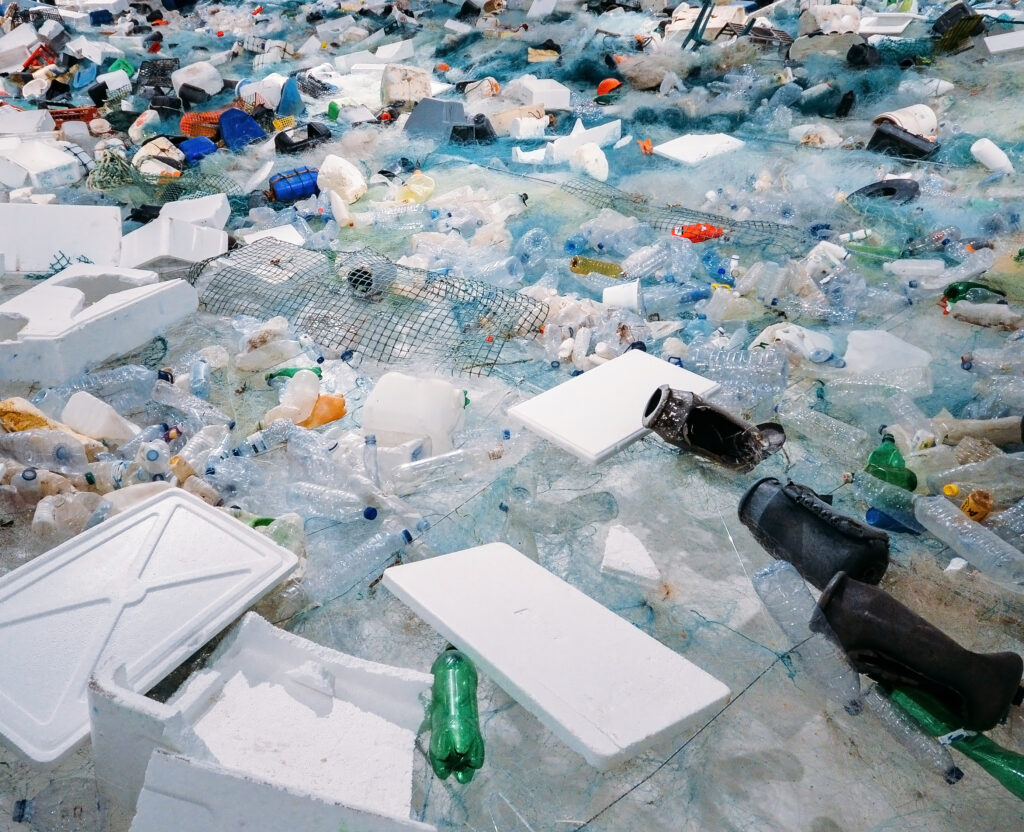Substituting Styrofoam: 5 More States Ban Polystyrene as Food Packaging

California, Delaware, Oregon, Rhode Island, and nearly all of Hawaii are joining the growing movement of states, counties, and municipalities that have banned bars and restaurants from using Styrofoam to package food starting in January 2025.
These Styrofoam bans couldn’t come soon enough as far as we’re concerned. Also referred to as expanded polystyrene foam, Styrofoam is a cheap, lightweight material made from polystyrene, usually identified in food packaging with the #6 “chasing arrow” logo. Polystyrene is made by joining together many styrene molecules – a chemical which can interfere with hormones, reproduction, and even cause cancer if you are exposed to it.
Download our new factsheet on polystyrene food containers.
Unfortunately, styrene contaminates the food that’s been stored in Styrofoam containers very consistently. A 2014 FDA study found styrene in 24 out of 24 polystyrene products as well as foods stored inside the containers like yogurt to soup to cookies.
Because it’s inexpensive and lightweight, Styrofoam is often used in school lunches and breakfasts. But kids are the most vulnerable to the impacts of harmful chemicals like styrene contaminating their food, so we made a Ditching Disposables toolkit to help any teacher, parent, or cafeteria worker get Styrofoam and other contaminating containers out of school lunches. We also teamed up with a like-minded nonprofit, Clean Production Action, and created two tools — GreenScreen Certified for Reusables and GreenScreen Certified for Single-Use Food Service Ware & Thermal Paper — to help you find foodware made with safer materials.
Many people don’t know polystyrene products cannot be properly recycled and try to do so anyway, which actually makes polystyrene one of the few materials that is more expensive to reuse than it would be to make more of it from scratch. But with more than 2 billion pounds of polystyrene products produced every year, more Styrofoam is the last thing we need.
Styrofoam contaminates recycling streams so regularly that many governments have stopped accepting it from the waste of other countries. Styrofoam products like packing peanuts look so much like food that animals and fish eat it, which harms ecosystems and animal health. Polystyrenes bioaccumulate in the body so they’ll be passed up the food chain as larger animals eat smaller animals that have eaten polystyrenes.
From mushrooms to seaweed, packaging innovators have been looking at other living things as they try to find a sustainable alternative to Styrofoam. Mycellium — the fungal alternative to roots — is a promising combustible alternative to Styrofoam because it grows rapidly, is lightweight, and repels water.
In the meantime, we applaud the states, cities, and countries that have banned restaurants and bars from packaging food in Styrofoam containers. With high costs to human health and the environment, it’s clear we should minimize polystyrene use in general, and that it certainly has no place near our food.
